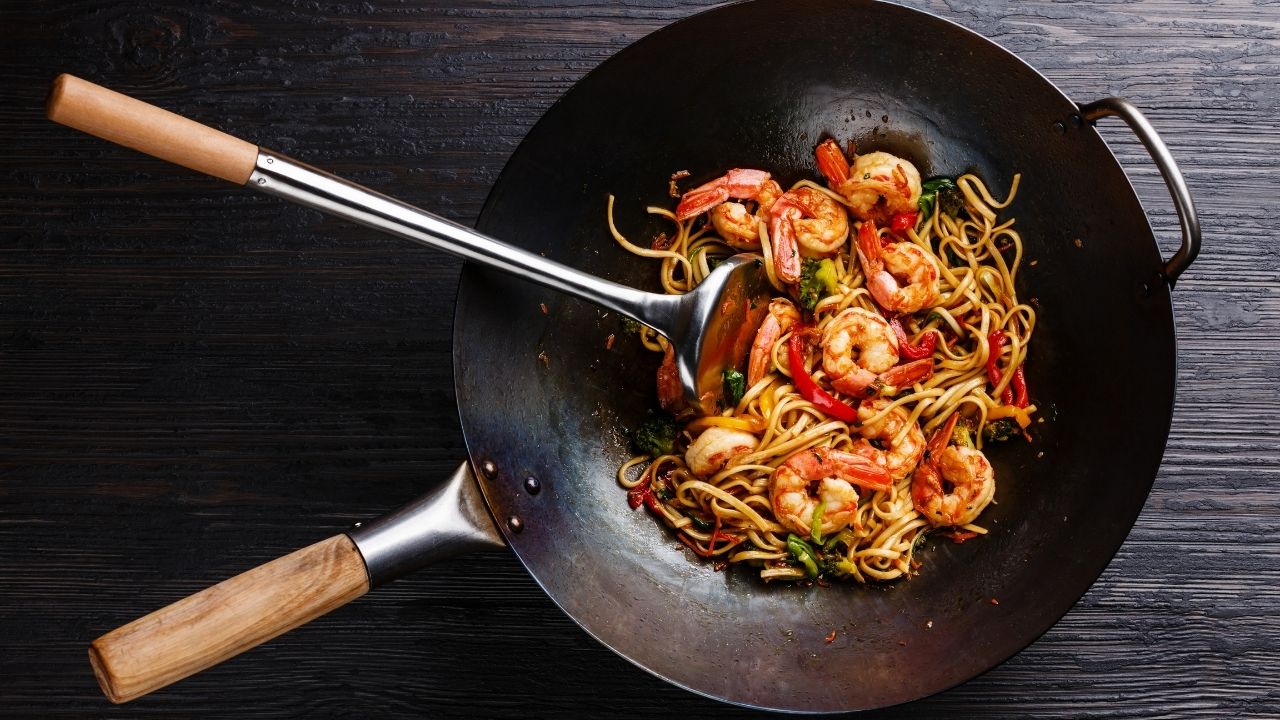Have you ever cooked with a wok? But I bet you have enjoyed a delicious Asian-style stir-fry dish made with this popular deep round-bottomed pan. Although it may be a brand new piece of cookware in your kitchen, the wok itself is not a new invention. It was already used in China more than 2000 years ago to cook meat, fish, noodles, rice, dumplings (gyoza), and also vegetables.
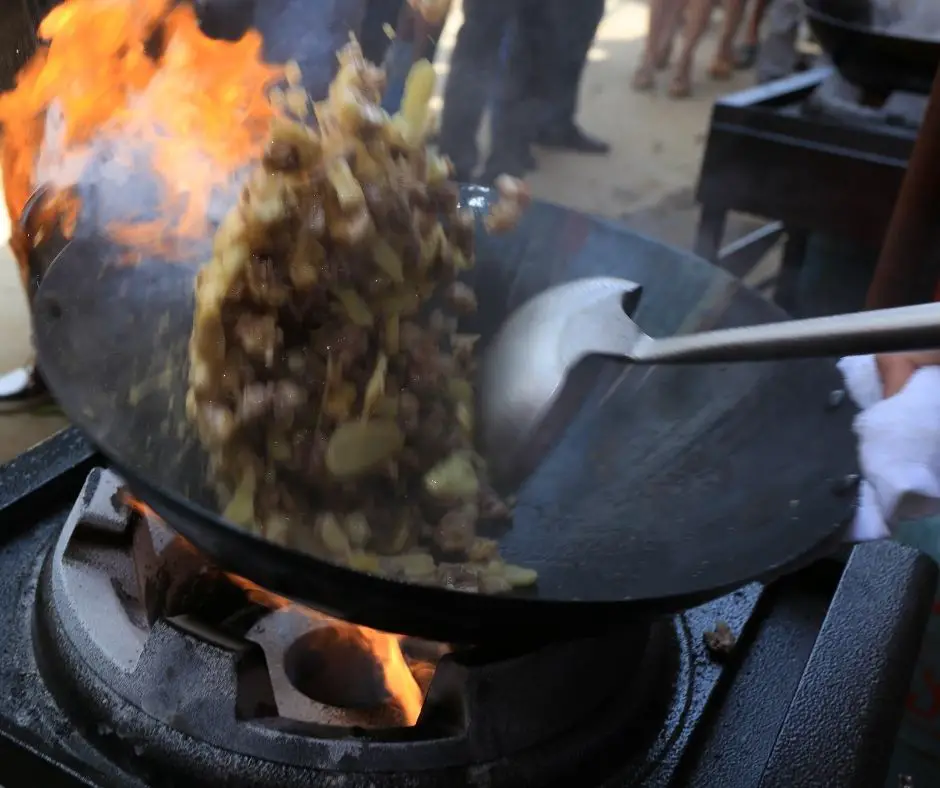
This oval-shaped pan is perfect for stir-frying, deep-frying, shallow-frying, steaming, and even roasting, but to make it work perfectly, you do need to use it over the gas stove.
Cooking with a wok is different than using a regular frying pan or skillet. Wok must be ripping hot before you even throw your ingredients in, so you can sear your food quickly in a proper takeout style.
That is why a gas burner or open flame is important because flat surface electric stoves do not provide enough heat for the round bottom wok pan due to a minimal contact area.
So, what if you only have an electric stove? Don’t worry; you don’t have to give up on homemade Fried Rice, Pad Thai, or Stir-Fry just yet.
Here are some tips and tricks on using a wok pan on an electric stove.
Can You Even Use a Wok On An Electric Stove?
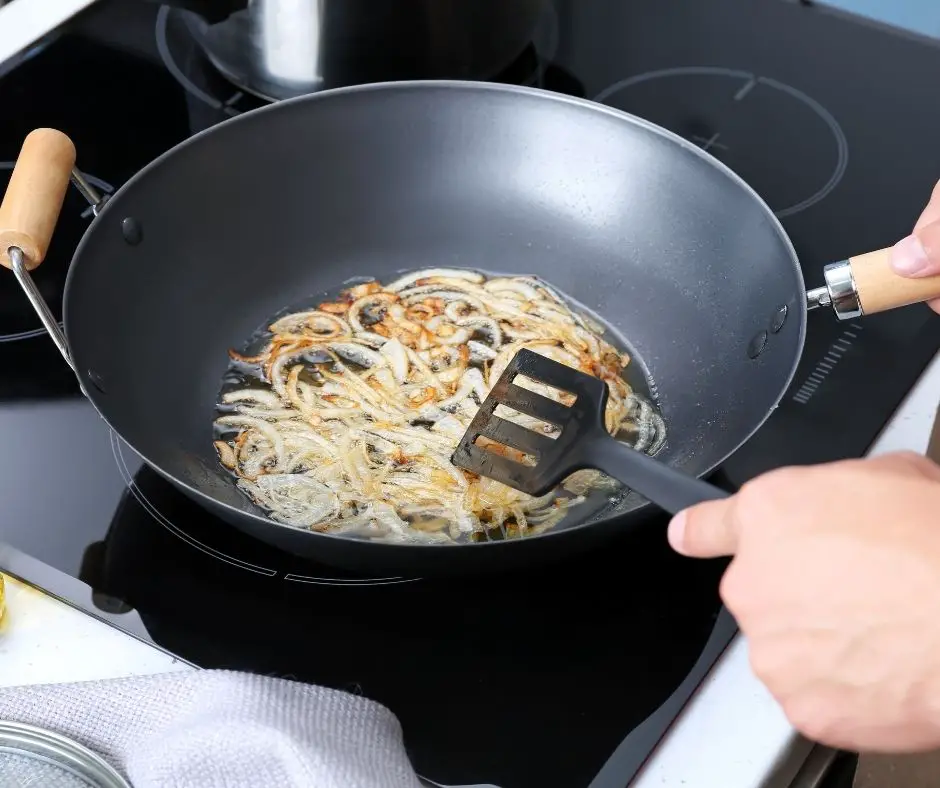
Traditionally wok pans have been used on firewood, coal, and gas stoves, but nowadays, many people have an electric stove in their kitchen. You can use a wok on an electric stove, but you need one with a flat bottom or a wok rack to prevent it from toppling over on a flat electric hob.
There are two main types of electric stoves commonly used in kitchens across America and probably in many other countries as well:
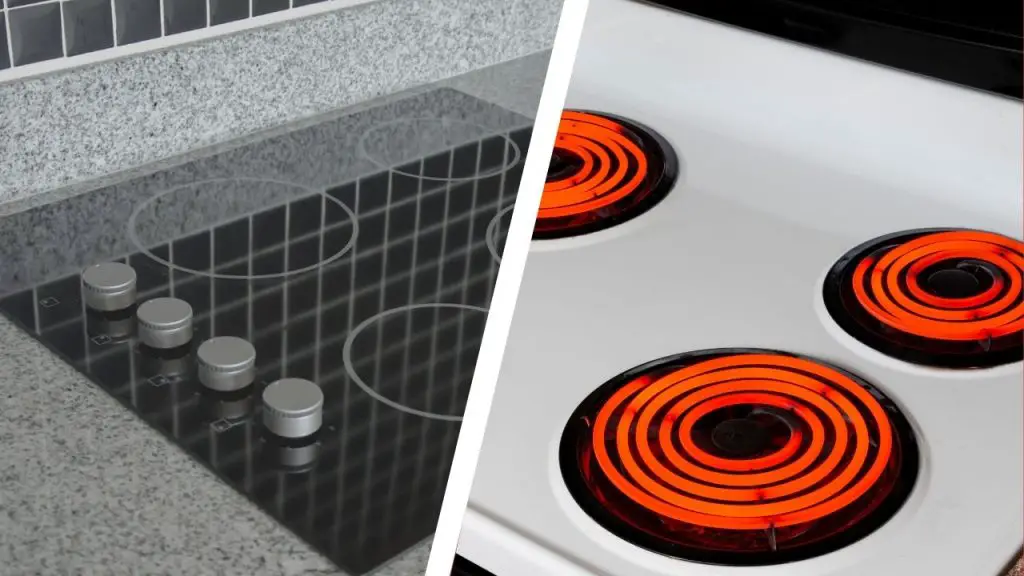
- Electric coil stove. The electric coil stove features a circular electrical element either sitting on a cooktop surface or recessed in a cavity.
- Smooth top electric stove. A smooth top electric induction stove is a more modern kitchen appliance and features either a glass or ceramic hob with heating elements underneath.
So, if you are a proud owner of one of these electric stoves, then you know where the problem lies when it comes to the authentic ‘way of the wok.’
So, let’s see what you need to make it work.
What Type Of Wok Pan Is Best For An Electric Stove?

Woks are classified depending on the:
- Shape
- Material
First, let’s look at wok shapes best suited for electric stoves.
Wok Pan Shapes
The two primary wok shapes are:
The flat bottomed wok has a flat base and high walls more suited for stir-frying on an electric coil stove or smooth ceramic hob without a wok stand. Be careful not to scratch or damage a ceramic or glass hob while vigorously shaking and flipping the contents of the wok.

TAP ON IMAGE TO VIEW PRICE
Round bottomed pans are the most common type of wok, extensively used for Asian-style cooking. The round-bottomed wok can be used on a modern smooth top and electric cooker together with a wok stand/ring.

TAP ON IMAGE TO VIEW PRICE
What Is A Wok Ring/Stand/Rack?
A wok ring or stand is a helpful piece of cookware deployed on the flat cooking surface to stabilize and support a round-bottom wok pan while cooking. A wok ring should be smaller than the wok diameter. 7-9-inch wok ring fits most commonly used 14-inch round-bottom wok pans.
Also, keep in mind that you’d want at least a 0.1-inch (about 3 mm) cap between the pan and the cooktop. So, when using a wok ring, the distance between the burner and the bottom of your wok depends also on the curvature of your pan.
But don’t worry, most standard-size rings like the ones below are designed to accommodate standard-sized woks.

TAP ON IMAGE TO VIEW PRICE
A wok ring is very helpful in the following instances:
- When using a round-bottomed wok pan on an electric coil cooker or hot plate. Naturally, round-bottom woks are unstable when put on a flat surface, and the wok stand helps stabilize the wok.
- When using a wok on a smooth top cooker. Glass or ceramic hobs are prone to abrasion. The wok stand helps reduce damage to the smooth top from the wok.
- Concentrate heat in a particular area. Some specific types of woks stands can help direct heat to specific areas of a wok(especially the bottom).
Types Of Wok Rings
There are several types of wok pan rings that are perfect for cooking on an electric stove.
Stainless Steel Rack
This wok ring or rack is made entirely of stainless steel and features a tapering, slightly conical shape with a wider circular base and a slightly smaller circular top. This ring usually comes in a size of 7-Inches on the top 9-Inches on the bottom, making it perfect for the majority of round-bottom pans.

TAP ON IMAGE TO VIEW PRICE
The stainless steel rack keeps the wobbly round-bottomed wok stable during cooking.
The rack usually creates a 1-1.5 inch gap between the heat source and the wok, protecting the glass electric stove’s surface from scratches and other damages.
There are different types of stainless steel wok rings:
- Wok ring with holes. This rack is perfect for high-heat cooking and has holes on its frame for more even heat distribution.
- Solid wok rings without holes. This rack works perfectly if you need to concentrate heat in a particular area, i.e., the bottom of the wok.
Pro tip: Wok racks should be at least 4 inches smaller than the woks diameter to fit perfectly.
Wire Frame Wok Ring
Made from chrome or chrome/steel wire, this is the simplest and cheapest form of wok rack available in the market today.

TAP ON IMAGE TO VIEW PRICE
As the name suggests, this rack is made of a combination of wires which join to form a sturdy frame with a slightly large base and smaller top.
The wire frame wok ring also doubles as a trivet to hold your wok when off the stove as well. However, since being open on the sides, I think it slightly limits its usefulness when cooking on the electric stove. I certainly won’t help to concentrate the heat but is just there to prevent the pan from falling over.
Read Also: Why to Use A Wok Instead Of A Frying Pan? – 6 Compelling Reasons!
Best Wok Pan Materials
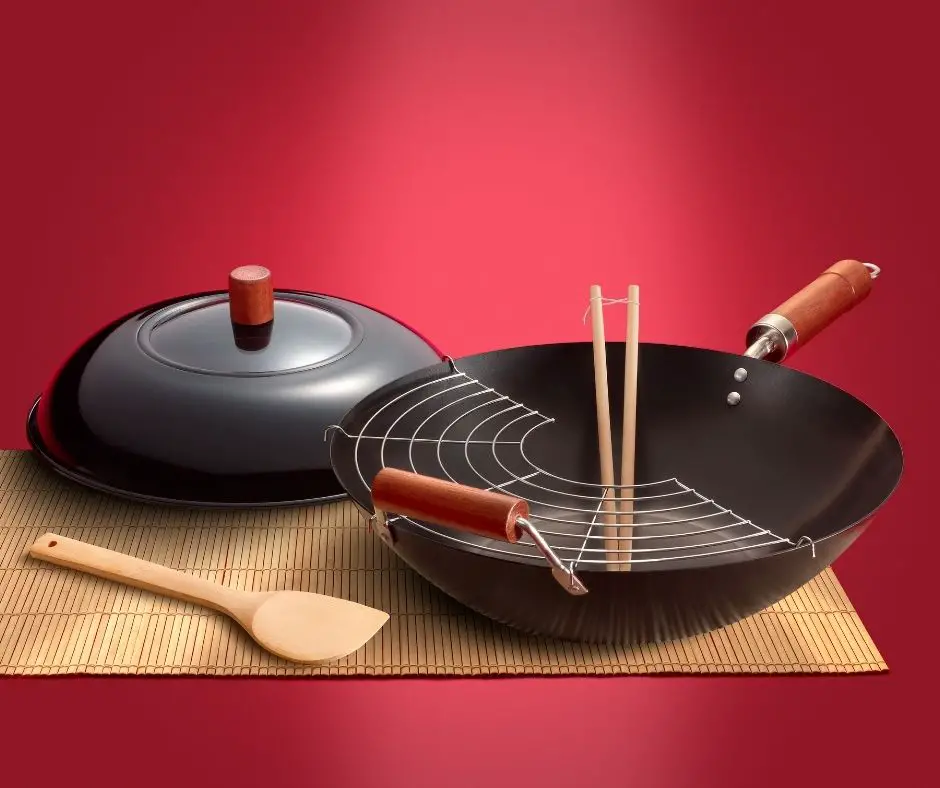
As woks have different shapes, they are also made of different types of metals. Below I have listed the most popular choices, in the order of how I would get them myself. But don’t let that sway your decision as they are all good options for electric and also gas stoves and open fire.
Here are different types of wok pans:
1. Carbon Steel
Carbon steel woks come with both, flat and round bottoms. These pans are naturally non-stick, heavy-duty, and will last you for a lifetime. The flat bottom version is popular when used on electric stoves since they heat fast and have excellent heat transfer properties.
These carbon steel woks, famously known as pow woks, usually have one single long handle which is designed to flip and toss the food over an open flame, giving your food a distinctly rich, authentic smoky flavor that users love.

The only downside of the carbon-steel wok is that it may require more than one seasoning session to perform optimally, however, some of them, like the one above, already come pre-seasoned.
TAP ON IMAGE TO VIEW PRICE
This modern non-stick carbon steel wok is made of black carbon steel and it has no chemical coating. You can use any kind of spatula with it including metal and wooden.
Wok seasoning refers to the process of creating a protective layer/patina over a wok’s surface to improve taste and create a non-stick surface while reducing rust and corrosion.
2. Cast Iron
Cast iron woks/cantonese woks are highly durable, affordable, with great heat transfer qualities that are very popular with chefs and home cooks alike.
As carbon steel woks come with one long handle, perfect for stir-frying then cast iron woks usually have two small handles on the side as this pan is mostly used for deep frying.
As with the carbon steel woks, the cast iron woks also need to be seasoned often to get the authentic flavor and to avoid rusting. However, some come really well pre-seasoned already, like the one below.

TAP ON IMAGE TO VIEW PRICE
Although cast iron woks are very sturdy, quality pieces of kitchen equipment, they are generally more affordable than any other type, with the exception of Le Creuset enameled cast iron woks, which are quite pricey.
3. Aluminum
Aluminum woks are not a common feature among most stir fry enthusiasts. I have tried the aluminum version and although it does the job, I just did not get that authentic feeling when cooking with it. But it is a great option for an electric stove as it comes with a flat bottom and has an excellent heat transfer, and ease of maintenance(non-rust), plus it is very affordable.

TAP ON IMAGE TO VIEW PRICE
The only disadvantage of the aluminum wok is the low heat retention (they cool fast) compared to the carbon steel and cast iron woks.
4. Stainless Steel
Stainless steel wok pans are durable, rust and scratch-resistant, affordable, and a favorite of many electric cooker users.
These woks are flat at the bottom, temperature responsive, cook well, and are considered a great all-rounder in the market today. It does not require any special maintenance and is a good option for some who cook stir-fry once in while.

TAP ON IMAGE TO VIEW PRICE
5. Copper
Copper woks are classy, elegant, corrosion-free, and boast excellent heat distribution qualities. Although not as popular a carbon steel ones. this cookware is a good and beautiful choice for anyone with an electric stove.
This copper pan is ideal for sauteeing, stir-fries, and tossing and stirring ingredients.

TAP ON IMAGE TO VIEW PRICE
Although this copper pan is such a beautiful piece of cookware it does have a few disadvantages you must keep in mind; it requires very special care and handling. It is not dishwasher safe, so hand wash only, and use only plastic or wood utensils to avoid damaging the tin lining.
Read Also: 4 Ways To Cook Eggs And Bacon In The Same Pan (From Sunny Side Up To Scrambled)
